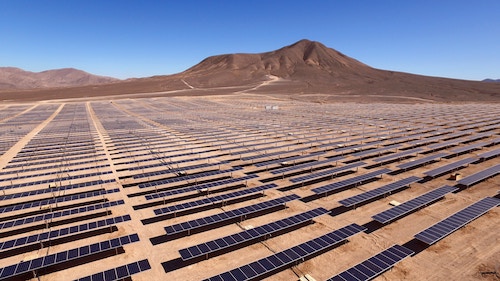 |
| Melissa Mahoney |
The 2023 UN Climate Change Conference known as COP28 that ended in mid-December finally recognized that the climate crisis, is at its core, a fossil fuels crisis.
Observers of the summit were skeptical from the beginning because it was held in the United Arab Emirates and overseen by the head of Abu Dhabi Oil Company Sultan Al Jaber.
What are the odds that petrostates and allies like Saudi Aramco, PetroChina, ExxonMobil, BP, Chevron, Shell and TotalEnergies won’t be gearing up their PR machines to ensure fossil fuels aren’t going anywhere?
For Melissa Mahoney who heads up the climate tech practice at V2 Communications in Boston, it’s just exciting that we’re at the point of even talking about the phasing out of fossil fuels.
A number of V2 clients attended the COP28 summit and Mahoney felt it was a success for them to gain visibility with corporate partners and government entities.
Keep eating burgers
Mahoney discussed her practice in an interview last week and how it has transitioned from the clean tech moniker in the early 2000s where focus was mostly on renewable energies and biofuels to a broader climate tech focus on all the ways that greenhouse gases are created, not just from fossil fuels.
While phasing out fossil fuels and ensuring clean energy is globally accessible is still a core priority, getting to net-zero requires a focus on other solutions as well, Mahoney stressed.
For example, Mahoney pointed out how our built environment is a huge source of emissions––the creation of just cement and concrete represents more than 8% of human-generated CO2 emissions every year.
Thankfully, this is a growing concern for entrepreneurs and companies like Ecocem and Brimstone have developed low-carbon cement, according to Mahoney.
No one wants to give up eating hamburgers to save the planet because of all the methane released into the atmosphere by cows, Mahoney joked.
But methane is a serious problem, as it is significantly more potent than CO2 when it comes to global warming, and agricultural activities are a big contributor.
A more tolerable solution from a company called Windfall Bio captures the methane created on farms and transforms it into valuable organic soil nutrients, Mahoney explained.
This is a win-win model, because it’s what Mahoney terms “waste to value.” There are other companies following the same type of model, capturing methane from other sources and creating products like green methanol.
There is even more investment and innovation happening in carbon capture, and direct air capture (DAC). These technologies either bury the captured emissions or turn them into valuable biproducts, according to Mahoney.
Mission-driven feel
Climate tech work with venture capitalists and early-stage companies has a more “mission-driven” feel, Mahoney acknowledged. “Someone asked me if it was depressing to be so focused on the climate crisis, and I feel just the opposite. It’s exciting for us to be part of the solution.”
However, a certain amount of patience is required because it might take decades before a company’s solution comes to fruition, but some level of investment in branding and marketing is needed early on to attract investors and the best talent.
This presents a unique challenge to developing messaging, finding the right partners during research and development and appealing to a variety of constituents and future customers, Mahoney detailed.
A good example of this is companies working on fusion, Mahoney noted. “You need to be building a brand and making sure people understand the potential of your product,” Mahoney said.
When you’re working with traditional technology companies, the expectation is that they are commercially ready and revenue-generating, while climate tech is an investment in the future, according to Mahoney. “The work just feels more significant.”


 Kristin Wilson-Palmer, who has been a senior VP in Edelman’s Washington, DC office since 2021, joins the Natural Resources Defense Council as chief communications officer.
Kristin Wilson-Palmer, who has been a senior VP in Edelman’s Washington, DC office since 2021, joins the Natural Resources Defense Council as chief communications officer. Educating the next generation to the facts and science surrounding the climate crisis.
Educating the next generation to the facts and science surrounding the climate crisis. Melanie Janin, who was executive VP at Weber Shandwick, has joined Conservation International as chief communications & marketing officer.
Melanie Janin, who was executive VP at Weber Shandwick, has joined Conservation International as chief communications & marketing officer.
 The United Nations’ climate conference is searching for a PR firm to support its COP28 summit slated for Dubai from Nov. 30 to Dec. 12, according to a report in the Financial Times.
The United Nations’ climate conference is searching for a PR firm to support its COP28 summit slated for Dubai from Nov. 30 to Dec. 12, according to a report in the Financial Times.


 Have a comment? Send it to
Have a comment? Send it to 
No comments have been submitted for this story yet.